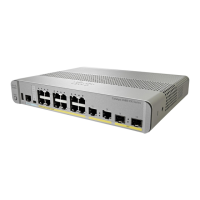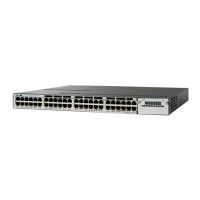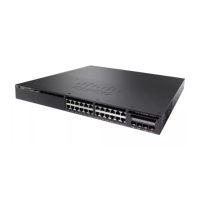SUMMARY STEPS
1.
enable
2.
configure terminal
3.
ip pim rp-candidate interface-id [group-list access-list-number]
4.
access-list access-list-number {deny | permit} source [source-wildcard]
5.
end
6.
show running-config
7.
copy running-config startup-config
DETAILED STEPS
PurposeCommand or Action
Enables privileged EXEC mode. Enter your password if prompted.enable
Step 1
Example:
Device> enable
Enters the global configuration mode.configure terminal
Example:
Device# configure terminal
Step 2
Configures your device to be a candidate RP.
ip pim rp-candidate interface-id [group-list
access-list-number]
Step 3
•
For interface-id, specify the interface whose associated IP address
is advertised as a candidate RP address. Valid interfaces include
physical ports, port channels, and VLANs.
Example:
Device(config)# ip pim rp-candidate
•
(Optional) For group-list access-list-number, enter an IP standard
access list number from 1 to 99. If no group-list is specified, the
device is a candidate RP for all groups.
gigabitethernet 1/0/5 group-list 10
Creates a standard access list, repeating the command as many times
as necessary.
access-list access-list-number {deny | permit}
source [source-wildcard]
Step 4
Example:
Device(config)# access-list 10 permit
•
For access-list-number, enter the access list number specified in
Step 2.
•
The deny keyword denies access if the conditions are matched.
The permit keyword permits access if the conditions are matched.
239.0.0.0 0.255.255.255
•
For source, enter the number of the network or host from which
the packet is being sent.
•
(Optional) For source-wildcard, enter the wildcard bits in dotted
decimal notation to be applied to the source. Place ones in the bit
positions that you want to ignore.
IP Multicast Routing Configuration Guide, Cisco IOS XE Release 3.6E (Catalyst 3850 Switches)
OL-32598-01 161
Configuring PIM
Configuring PIMv2 BSR

